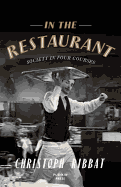
For cultural historian Christoph Ribbat (Flickering Light: A History of Neon), restaurants transcend their gustatory function and instead reflect the microcosms of a larger society. Ribbat's academic but compulsively readable 250-year cultural history explores the restaurant in all its guises, from 18th-century Parisian establishments serving restorative bouillons to businesses focused on pleasing the customer, from street vendors and bars to fast food joints and upscale cafes where chefs pursue excellence and the coveted Michelin star.
As much as the people within--cooks, hosts, servers--control the image of a restaurant, so, too, does society from without. The adoration (or biting criticism) of legions of food writers, customers, student activists and sociologists has played just as prominent a role in shaping restaurants historically as those involved with its intimate day-to-day operations. A restaurant is "a place that generates new forms of creative innovation, and a site of exploitative labour."
Divided into four chapters, In the Restaurant describes how aspects of the restaurant shaped various individuals' life experiences. "In the restaurant as a narrowly limited space, people collide with people and ideas with ideas." It is "one place where both intimate pleasures and social ambitions can be explored."
People often go to restaurants to see and be seen, to participate in the experience of open exclusivity that would otherwise be denied to those outside its social circle. In so doing, Ribbat shows, the restaurant itself has come to reflect the cultural and sociological principles of the society in which it exists. --Nancy Powell, freelance writer and technical consultant

